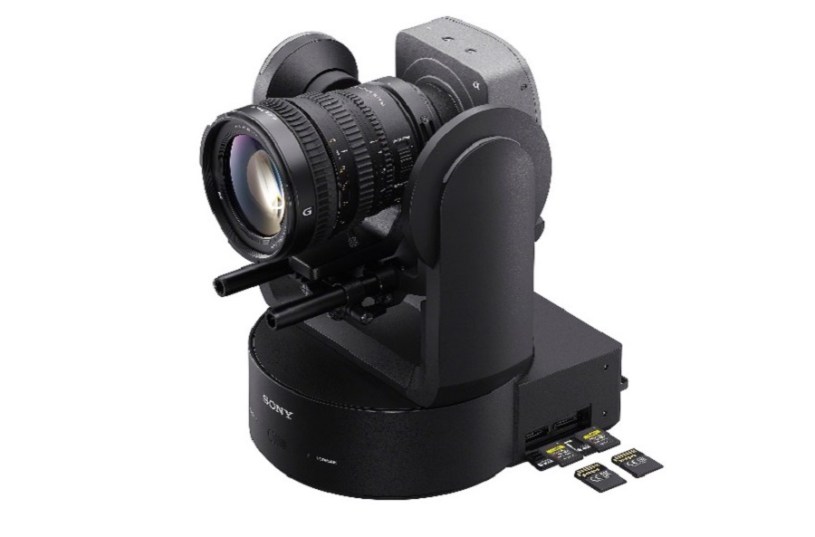Sony has announced a new addition to its Cinema Line in the form of the ILME-FR7, an E-mount interchangeable lens camera with a full-frame image sensor and built-in pan/tilt/zoom (PTZ) functionality.
The FR7 features a back-illuminated 35mm full-frame CMOS image sensor Exmor R™ with approximately 10.3 effective megapixels and wide 15+ stop latitude in a pan tilt zoom (PTZ) camera for the first time.
In addition to wide range, low noise, and cinematic full frame bokeh, the sensor also delivers high sensitivity that allows ISO to be expanded up to 409600 when shooting in low light.
The FR7 features Sony’s E-mount and can mount a wide range of E-mount lenses, including the G Master™ series. A choice of focal lengths ranging from 12 mm to 1200 mm is designed to give users comprehensive creative control.
With a new dedicated web application, all camera settings can be controlled from a tablet or computer web browser, with multiple people able to monitor FR7 footage remotely at the same time.
Multi-camera monitoring is also enabled, allowing multiple cameras to be viewed remotely on one device. With its integrated remotely controllable pan/tilt mechanism, the FR7 can be mounted on a tripod, on a ceiling with the dedicated CIB-PCM1, or in other locations with limited access, so that subjects can be followed and recorded from multiple viewpoints.
The FR7 is compatible with Sony’s RM-IP500 remote controller for multi-camera production, reducing the need for dedicated staff in production studios and other shooting situations. A single RM-IP500 unit can remotely control up to 100 PTZ cameras and provide joystick-controlled pan, tilt, and zoom operation. The supplied infrared remote controller will also support the FR7’s operation.
Sony ANZ head of digital imaging Jun Yoon said the FR7 would open up new ways for creators to deliver more engaging content.
“The FR7 is a ground-breaking new product that delivers on both the growing demand for remote PTZ cameras, and on the trend and desire to produce cinematic images for broadcast and live production,” he said.


